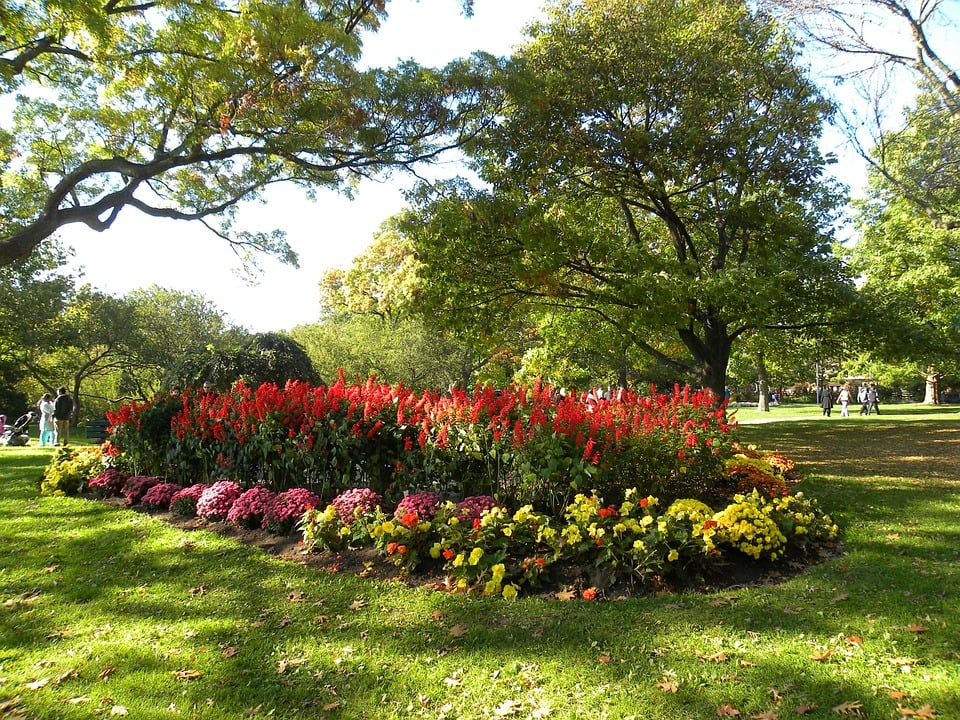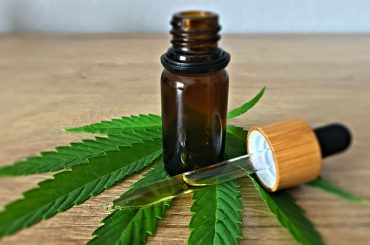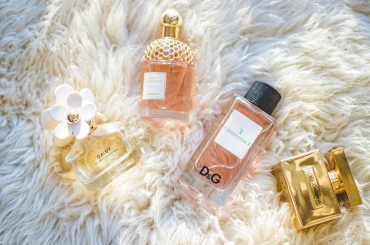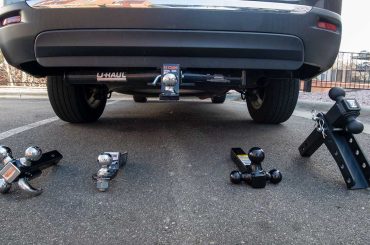Table of Contents
Do you have a shaded area in the backyard where virtually nothing appears to blossom? You tried labouriously to plant grass, flowers, and shrubs and eventually discovered that they required more sun to thrive. Don’t despair! Thankfully, there are several hardy plants for “under tree” choices.
In this blog, we have listed some amazing plants for under-tree gardening, including alpine currants, coral bells, English Ivy, and many more. You’ll learn their binomial name, their need for sunlight and moisture, as well as their other noteworthy traits. These varieties are not only shade-tolerant but also add hues, natural beauty, and pleasant aroma to your landscape.
Here, you’ll also get creative inspiration for designing your porch, garden, or woodland yard.
1. Alpine Currants
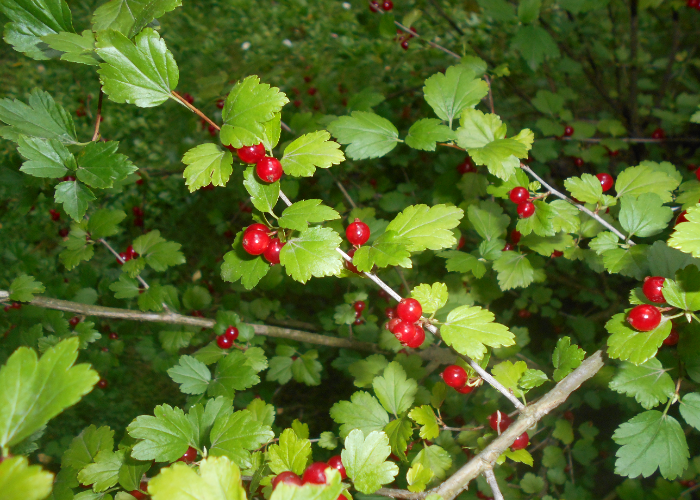
- Binomial Name:Ribes alpinum
- Type of Plant: Shrub
- Sunlight Requirement: Full-partial sun, shade
- Hardiness: Zones: 2-7
- Height: 3-6 inch
Alpine currant, or mountain currant, a small deciduous shrub with cheery berries and delicate waxy leaves, embodies the joy associated with the festive period. Currant flowers typically grow in clusters. They come in various hues, from light green to white, pink, scarlet, red, and yellow.
As Ribes alpinum appears to do well despite soil quality, natural light, or humidity levels, it is great for hedges and borders, especially in yards with a good number of shady trees.
2. Angel Wing Begonia
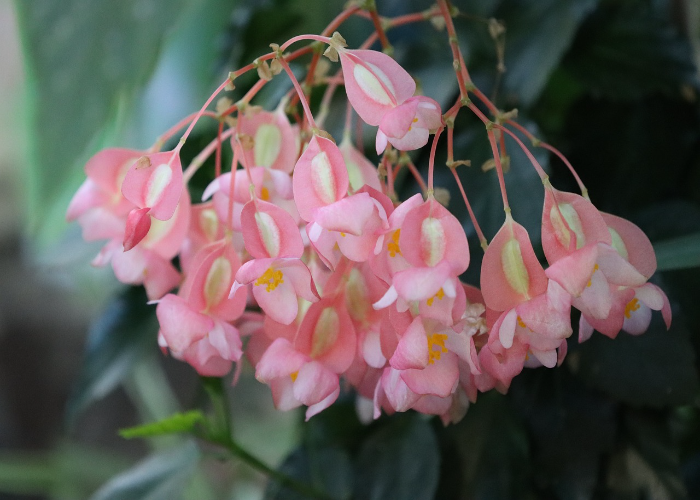
- Binomial Name: Begonia’ Angel Wing’
- Type of Plant: Perennial shrub
- Sunlight Requirement: Indirect sunlight, partial shade
- Hardiness Zone: 10-11
- Height: 12-30 in
Angel wing begonia is a hybrid of Begonia coccinea and Begonia aconitifolia. Shun harsh sunlight may burn their leaves. They grow best in indirect daylight and moist and well-drained soil.
These equatorial plants yield clumps of red or pink blossoms, and their leaves resemble wings. Typically, the underside of the leaves displays a rich shade of purple or red.
A young angel wing begonia that grew indoors can fit on a table and is quite small. They are also appropriate for hanging planters and vessels.
- Amazon Kindle Edition
- Paradise, Garden (Author)
- English (Publication Language)
3. Bleeding Heart
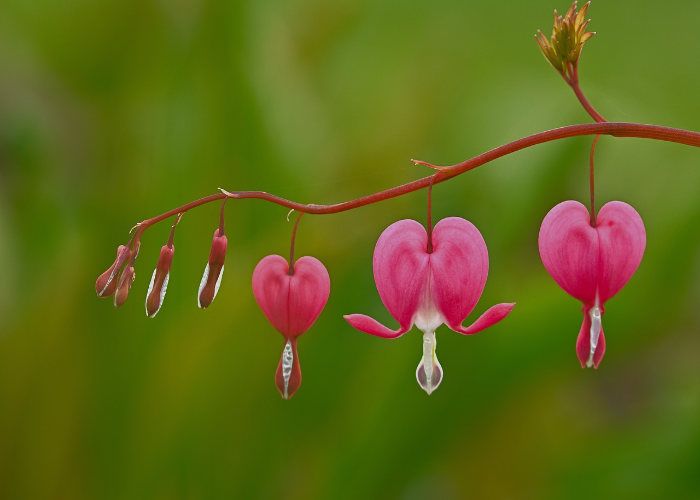
- Binomial Name: Dicentra
- Type of Plant: Winter hardy, bushy climber
- Sunlight Requirement: Light shade
- Hardiness Zone: 3-9
- Height: 6-12 inch
Most of the time, the bleeding heart thrives in the morning sun and afternoon shade to bloom profusely. They require well-drained soil, too much moisture will cause them to rot.
The supple roots of the bleeding heart plant grow new shoots that emerge in the first weeks of spring or winter end in cooler regions. The floral stalks appear over the stems by mid-spring.
The pink or white heart-shaped flowers are suspended in a row from every single stalk—the flowers’ mass results in the flowers’ slender stalks bending and hanging downward.
- Amazon Kindle Edition
- Beverly, Mason (Author)
- English (Publication Language)
4. Baltic Parsley
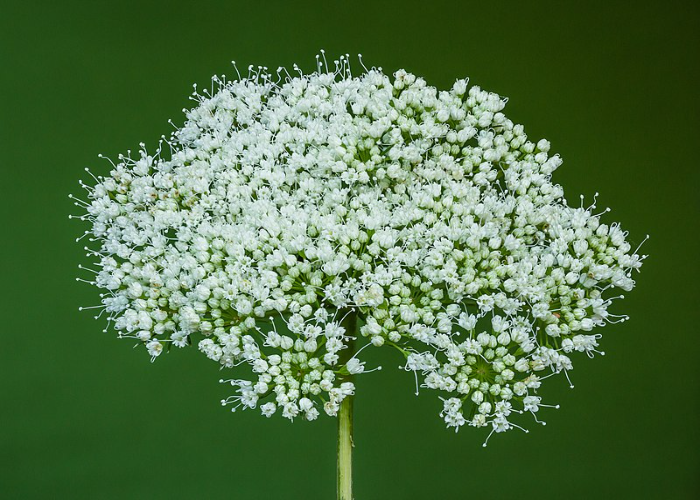
- Binomial Name:Cenolophium denudatum
- Type of Plant: Bushy, semi-evergreen plant
- Sunlight Requirement: Full or Partial sun, shade
- Hardiness Zone: 6-9
- Height: 3-4 inch
The abounding, intricately segmented deep-green fern-like leaves give way to often purple blossoming stems. It needs moist and well-hydrated soil.
Summer and autumn are the bloom time that displays clustered greenish-white flowers. It has a fast self-seeding ability and adaptability to poor soil and drought.
These beautiful flowers look stunning in cut or dried floral arrangements and serve as an oasis for helpful insects.
5. Bottlebrush Buckeye
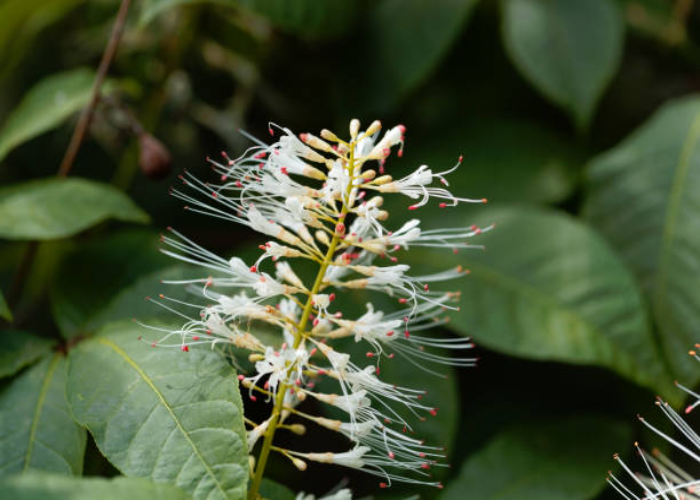
- Binomial Name:Aesculus parviflora
- Type of Plant: shrub
- Sunlight Requirement: Shade, partial-full exposure
- HARDINESS Zone: 4-8
- Height: 6-12 inch
The bottlebrush buckeye is a thick and rounded deciduous shrub. They can bloom under a tree during summertime and are a great option for gardeners looking for a seasonal plant variety that grows well in shaded areas.
It produces thick cones of white blooms with drawn-out, pink strands and red anthers. The pleasant shade of green changes to a shiny gold colour in the autumn, with burgundy patches running along its centre and veins. These shrubs can withstand cold winters if they are planted in an adequately watered loamy soil.
They are suitable for use as green separators between smaller areas due to their petite stature.
6. Bishop’s Hat
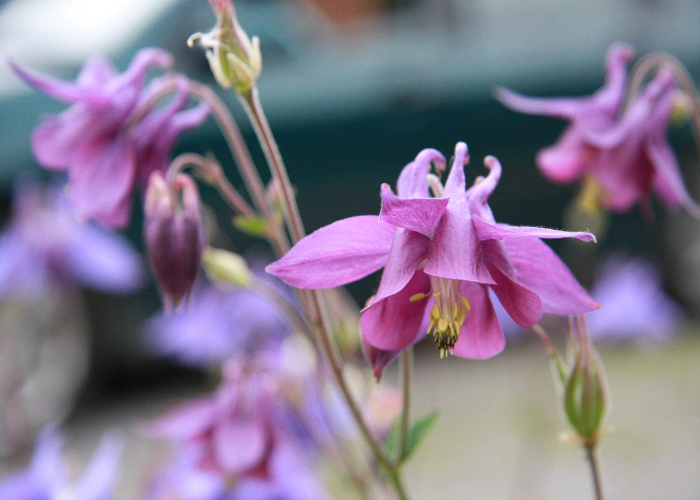
- Binomial Name:Epimediums grandiflorum
- Type of Plant: Perennial
- Sunlight Requirement: Partial sunlight, shade
- Hardiness Zone: 3-9
- Height: 6-12 inch
A group of perennial herbaceous woodland plants known as bishop’s hat or barrenwort grows in dry shade. Various species produce oval, heart, or triangle leaves as well as greenish-red leaf colours.
It easily grows in shallow soils. You need to water the soil to keep it moist. They are astonishingly drought- and shade-tolerant. Barrenwort flowers contain four delicate petals and bloom between the start of spring and the beginning of summer.
The flowers come in shades of yellow, red, pink, purple, or white. The inner petals and outer stamens can often have two different hues of the same. The colourful foliage of these evergreen plant varieties forms superb ground coverings.
7. Coral Bells
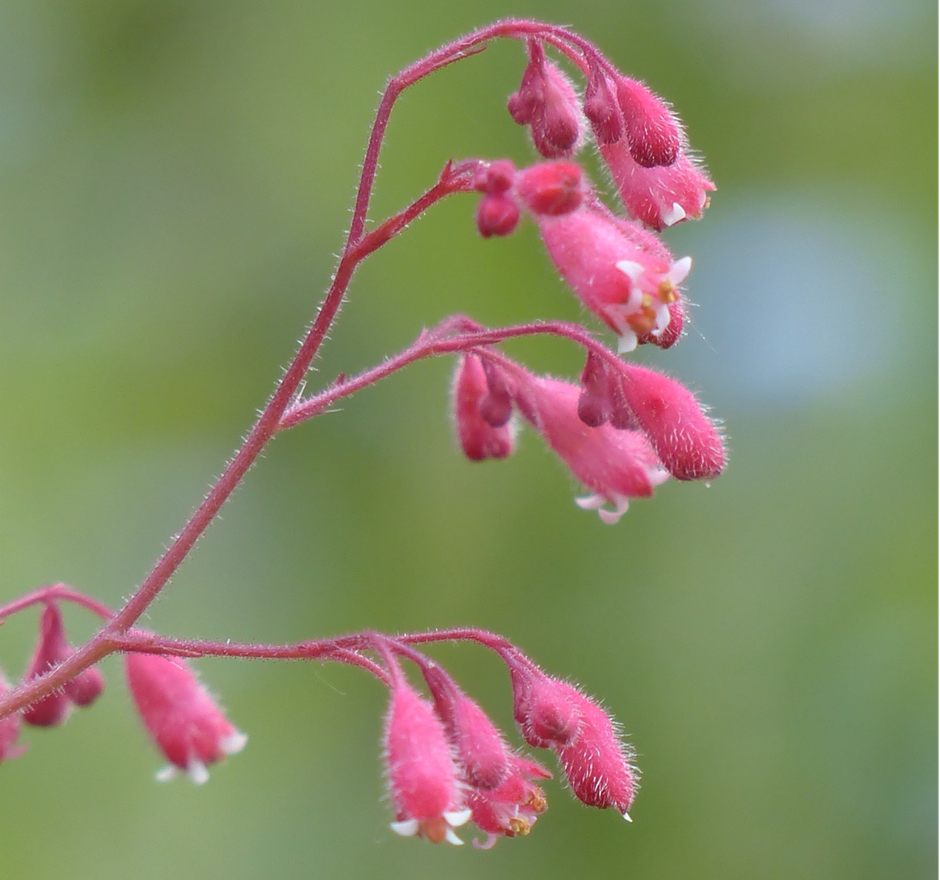
- Binomial Name:Heuchera
- Type of Plant: Evergreen herb
- Sunlight Requirement: Full sun to partial shade
- Hardiness Zone:
- Height: 1-3 feet
Coral bells thrive in the shade and are prized for the colours, textures, and shapes of their foliage. They grow as small, bell-shaped mounds with hard roots, topped with tall stems. They bloom in the spring or early summer.
Coral bells easily thrive in soil that drains well and is rich in organic matter. They are available in a variety of shapes and hues, including chartreuse, green, yellow, peach, purple, silver, and all gradations in between.
As they may expand up to three feet, it is suggested that you set them only a few feet apart. Planting coral bells in containers or groups as a decorative border is viable.
8. Clematis
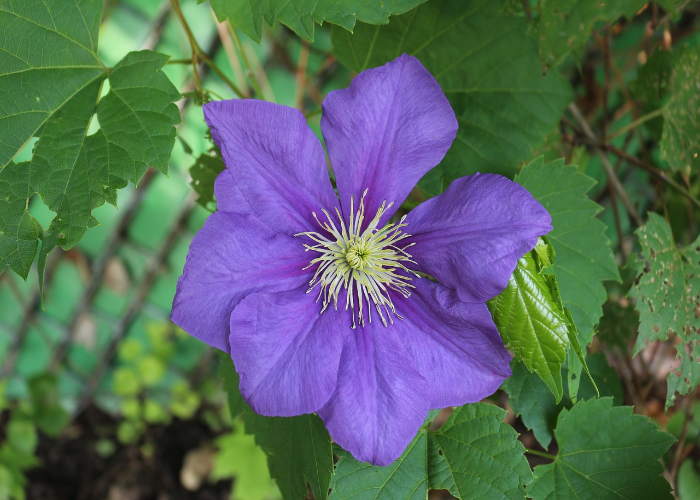
- Binomial Name: Clematis
- Type of Plant: Herbaceous
- Sunlight Requirement: Full sun, partial shade
- Hardiness Zone: 4-9
- Height: 8-12 feet
The large perennial genus Clematis contains about 300 varieties as well as plenty of hybrids. The majority of the garden species are hardy climbing vines, but there are also straight-growing species as well as non-clinging ground-covering plants.
Clematis’ Fujimusume’ is one of the hybrid varieties that can withstand complete shade. This dense variety carries enormous, 20 cm-wide bowl-shaped blooms in a lovely pinky-purple shade. The first blooming season starts in June and July, followed by another flush at the end of the summer. Clematis prefer to grow in moist and well-drained soil.
It’s perfect for smaller landscapes because it’s sufficiently small to fit in a pot. This variety grows beautifully over arbours, fences, walls, and other structures.
- Tall & Decorative- 145cm High garden obelisk trellis. They are great for training climbing plants...
- Rust-proof & Weather-resistant - Metal poles with a plastic casing that contains UV inhibitors to...
- Sturdy Yet Lightweight - The garden trellis is quite tall and a good width yet lightweight, buried...
9. Daphne
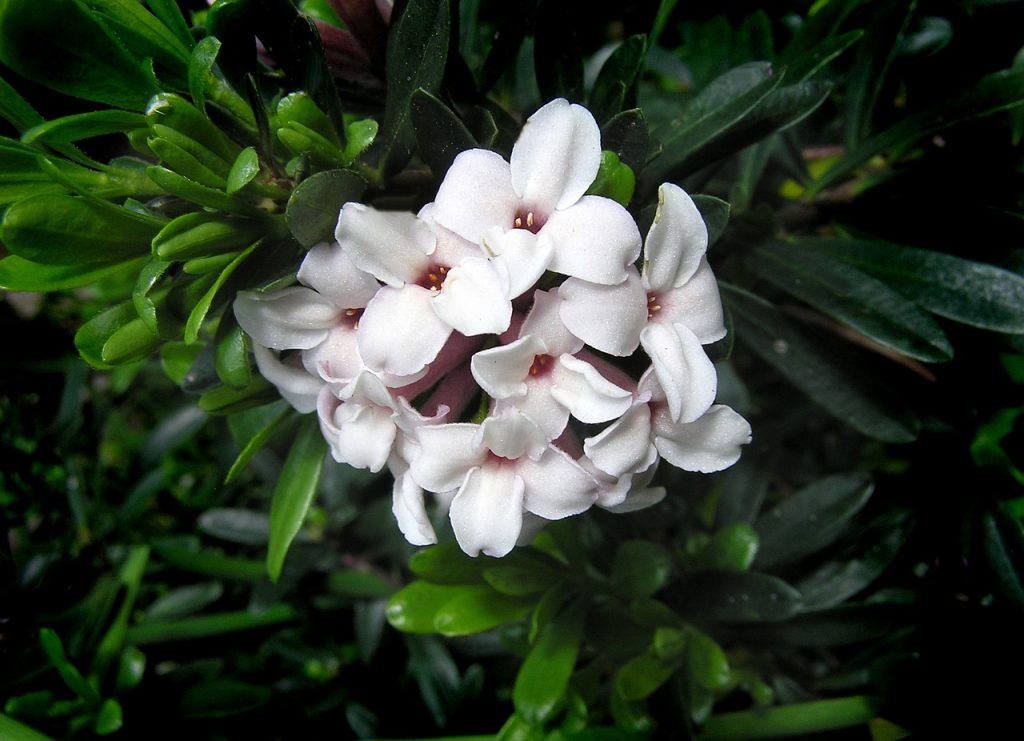
- Binomial Name:Daphne
- Type of Plant: Shrub
- Sunlight Requirement: Dappled shade
- Hardiness Zone: 4-9
- Height: 1-5 feet
Daphnes are shrubs with incredibly scented flowers and broad leaves. The majority of daphne species produce clusters of tiny flowers in red, pink, green, or white hues.
In accordance with plant type, they bloom at different times of the year. The semi-evergreen types shed some of their leaves over the winter, notably in colder climates, while perennial types keep their leaves year-round.
Water your plants frequently after planting until they are rooted nicely. After that, Daphne requires watering during dry periods. They look great in rock gardens, small yards, mixed borders, and woodland areas.
10. English IVY
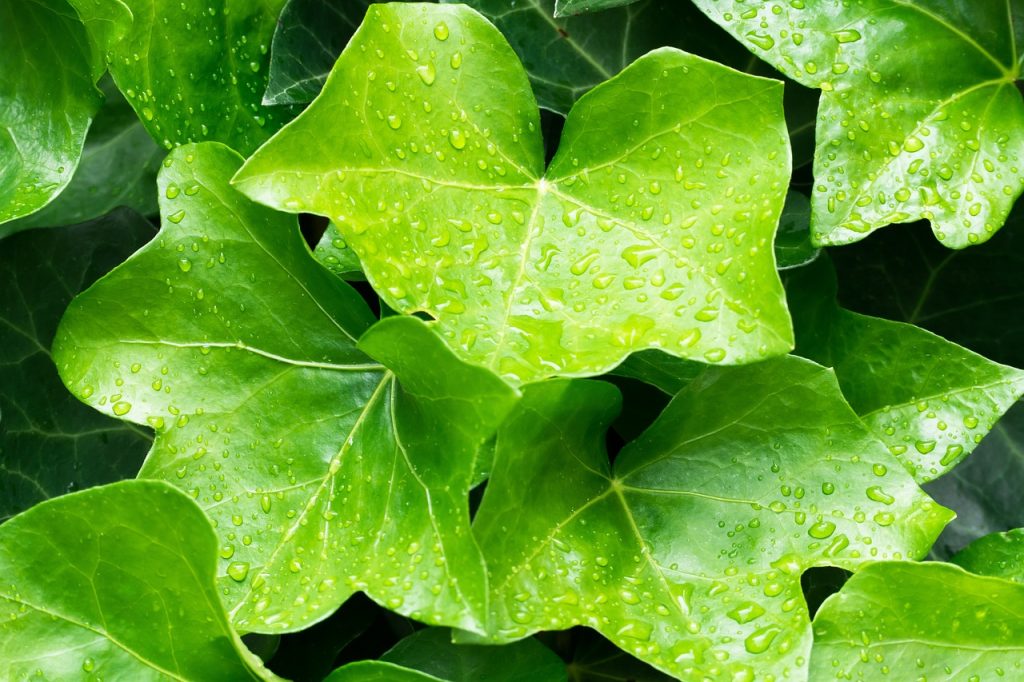
- Binomial Name: Hedera helix
- Type of Plant: Climbing plant
- Sunlight Requirement: Full-sun, shade friendly
- Hardiness Zone: 4-13
- Height: 8 inch
English ivy, a shade-loving vining plant, is excellent for adding greenery and highlighting less appealing areas in a garden, such as a wall or man-made structure. In the spring, they bloom.
It has dense clusters of white flowers that resemble grass flowers. It has dark evergreen leaves and clings to surfaces using aerial or ground roots. It can also flourish on rocky ground. Ivy prefers soil that is evenly moist but not soggy and stays somewhat on the dry side.
Grow in your backyard or let the multicoloured leaves descend over the edges of pots on the front walkway.
11. Dimpled Trout Lily
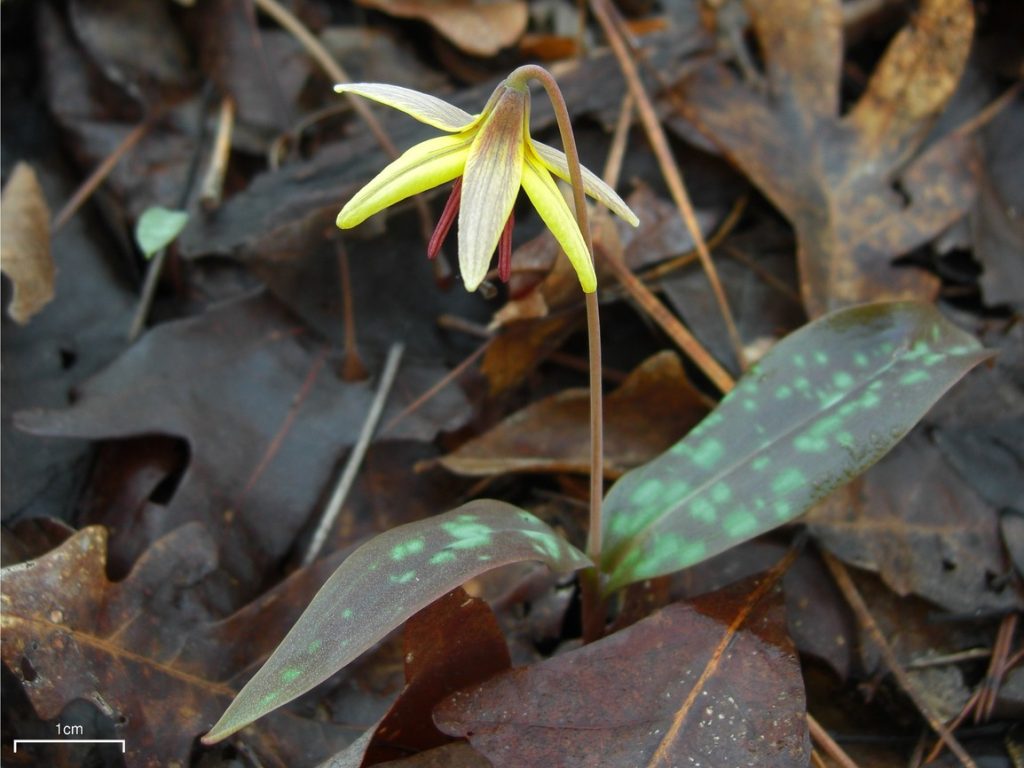
- Binomial Name:Erythronium umbilicatum
- Type of Plant: A perennial bulb
- Sunlight Requirement: Full to partial shade
- Hardiness Zone: 4-9
- Height: 4-10 inch
The “Dimpled Trout Lily” grows on slender stems topped with bright yellow blooms that are flecked with a deep violet hue.
In the springtime, it yields flowers. As these short-lived plants of self-sowing variety grow from bulbs, they create huge colonies. They have slowly gone dormant since May’s end.
Their needs involve all-year-round shading and humus-enriched soil, making them one of the preferred “plants for under trees” varieties.
When grown in a 6-inch pot and kept out of bright sunshine, the Dimpled Trout Lily requires 1.2 cups of water every ten days to survive. They can be planted under trees or along a waterway or a pond.
12. Dwarf Scouring Rush
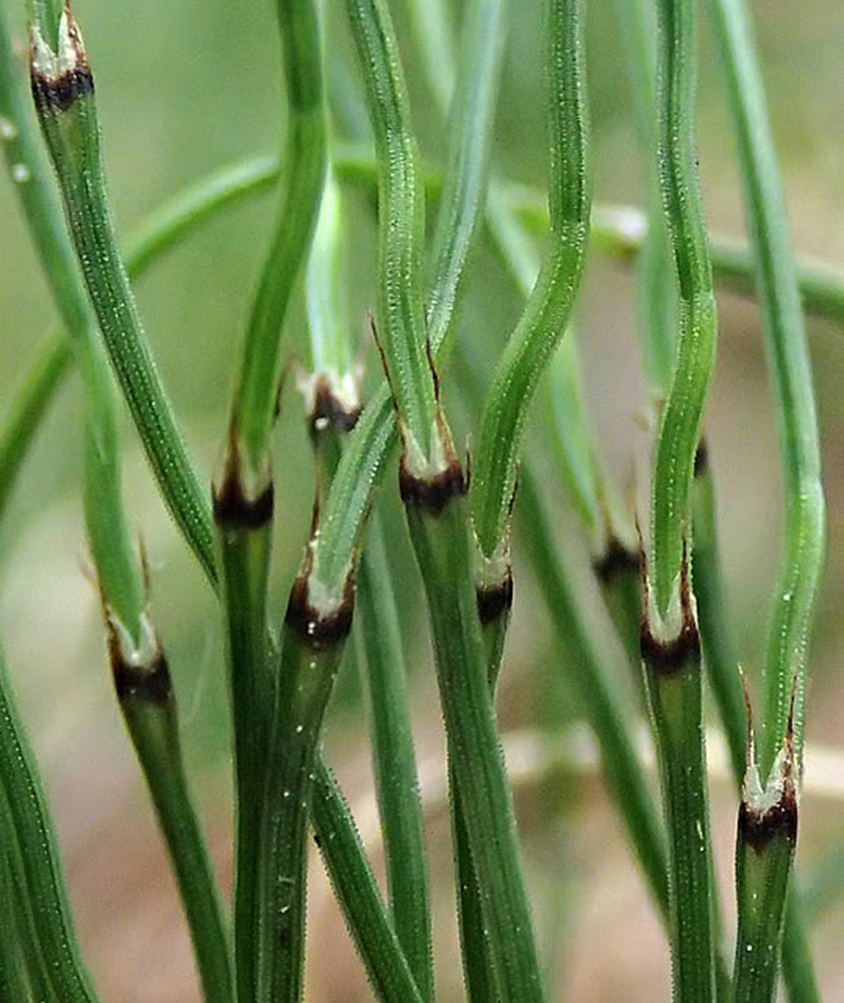
- Binomial Name: Equisetum scirpoides
- Type of Plant: Decorative grass
- Sunlight Requirement: Full daylight to partial shade
- Hardiness Zone: 4-9
- Height: 1-8 inch
In close-knit colonies of its own, dwarf scouring rushes flourish. They have undetectable brown flowers that resemble dark circles along their stalks, just like a variety of grassy plants do.
Rush tolerates a wide range of soils insofar as it is kept moist and has an acidic to moderately acidic pH. It can endure prolonged periods of total shade.
At the start of winter, the stems succumb while their roots lie dormant. The plant starts growing again in the spring; this cycle may go on for over a decade.
13. Elephant Ears
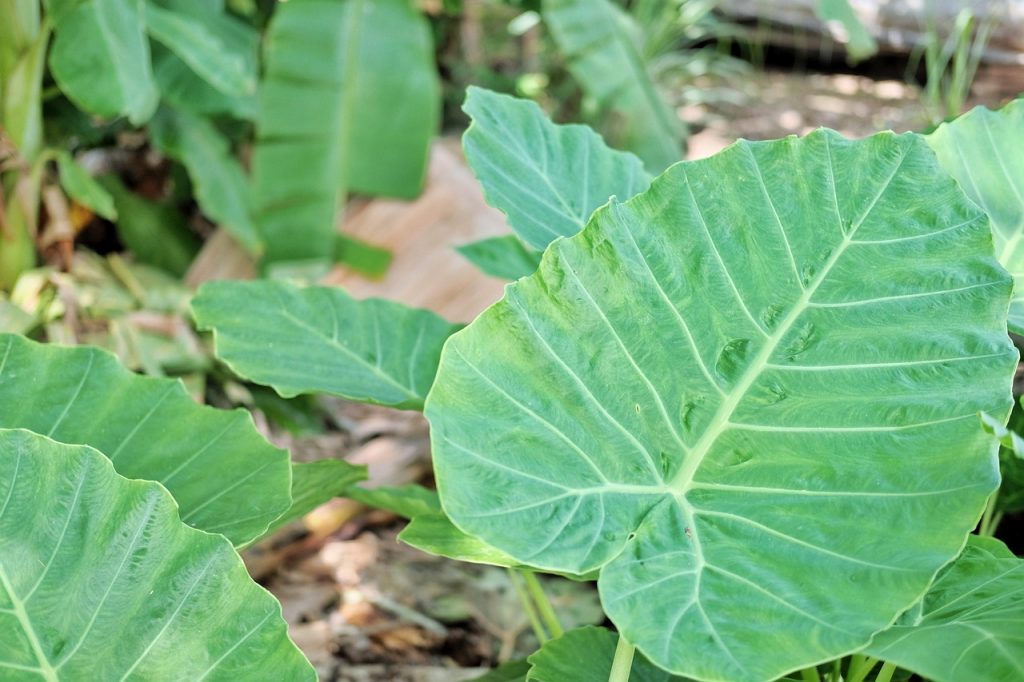
- Binomial Name:Colocasia
- Type of Plant: Evergreen herb
- Sunlight Requirement: Partial shade
- Hardiness Zone: 9-11
- Height: 1-8 feet
Elephant ear plants thrive in a warm and humid climate, like that of their native place Southeast Asia.
The herbaceous plant prefers nutrient-rich soil. It is best suited for low-lying regions, rain gardens, and wet areas along creeks and grows easily under a pine tree. They need regular watering, but overwatering must be avoided.
Elephant ear plants are suitable for garden design and can be grown inside as well as outside.
- 2 X Bulbs x super large tropical leaf plant edoe taro colocasia elephant ear corms
- Please note that growing instructions will not be sent with the seeds as it’s easily available on...
- If you still need our growing instructions, we are happy to help! Just ask please 🙂
14. Hortensia
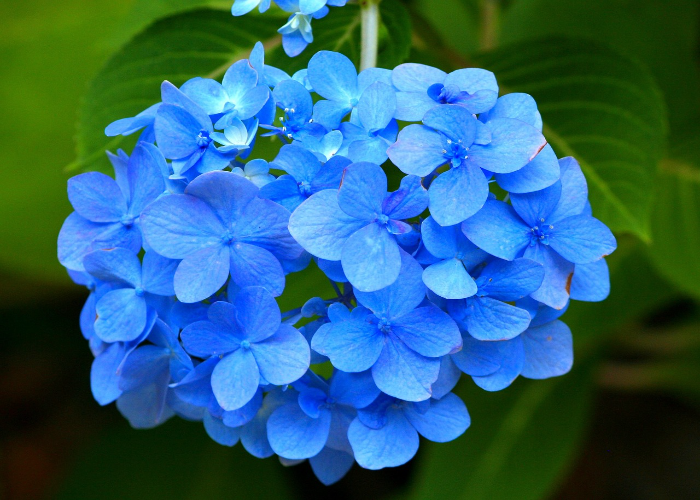
- Binomial Name:Hydrangea
- Type of Plant: Shrub
- Sunlight Requirement: Partial shade
- Hardiness Zone: 3-8
- Height: 3-8 feet
Hortensias are shrubs that are deciduous and have full-bloomed clusters of circular, umbrella-shaped pink, white, purple, or blue blossoms. They indicate acidic soil by blooming blue and alkaline soil by blooming pink.
The majority of hortensias flourish in fertile, moisture-rich soils that drain well. They typically tolerate the morning sun, but they require shade in the afternoons to stay out of the intense midday sun. They have two blooming seasons, summer and autumn.
15. Japanese Forest Grass
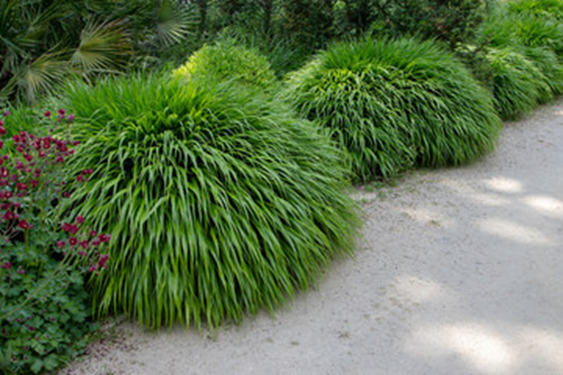
- Binomial Name:Hakonechloa macra
- Type of Plant: Perennial grass
- Sunlight Requirement: Shade
- Hardiness Zone: 5-9
- Height: 1-2 feet
The Japanese forest grass, a deciduous plant, grows in humid shade and has stacks of descending leaves. When it grows in partial shade, the leaves display a golden hue as well as patches of multiple colours.
The soil needs to be evenly moist to support the plant’s growth. It needs soil with lots of humus. When the weather is dry in the summer, it is best to use mulch to stop moisture loss and to water the plant regularly.
This beautiful grass is perfect for use as landscaping in shady locations, rock gardens, and shaded gardens. Grow in pots as well.
16. Japanese Pachysandra
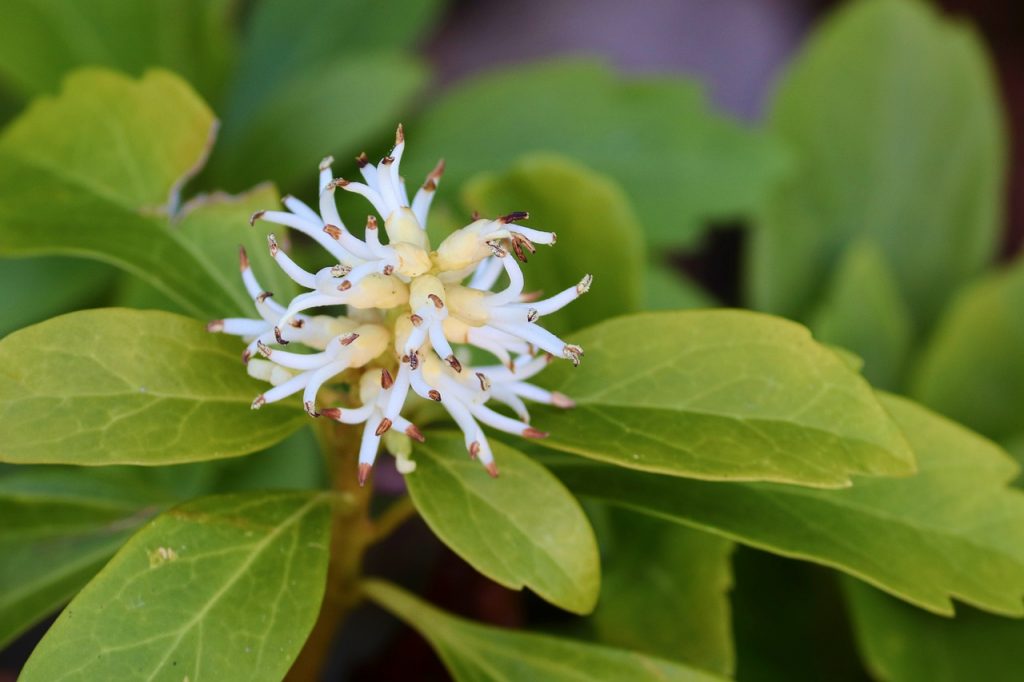
- Binomial Name:Pachysandra terminalis
- Type of Plant: Evergreen shrub
- Sunlight Requirement: Partial to full shade
- Hardiness Zone: 4-8
- Height: 8-10 inch
The perpetually green plant Pachysandra terminalis, referred to as Japanese spurge, expands via slender, underground stems. It creates a thick floor of lush, dark green foliage.
It favours well-drained, humid, moderately acidic soils but is tolerant of dry conditions. It has little white flower heads that bloom in the early spring. Pachysandra can grow in various soil types, from clay-like to sandy and from wet to well-drained.
Given that it is simple to grow and maintain and has dense foliage that adds beauty to any landscape.
17. Mahonia
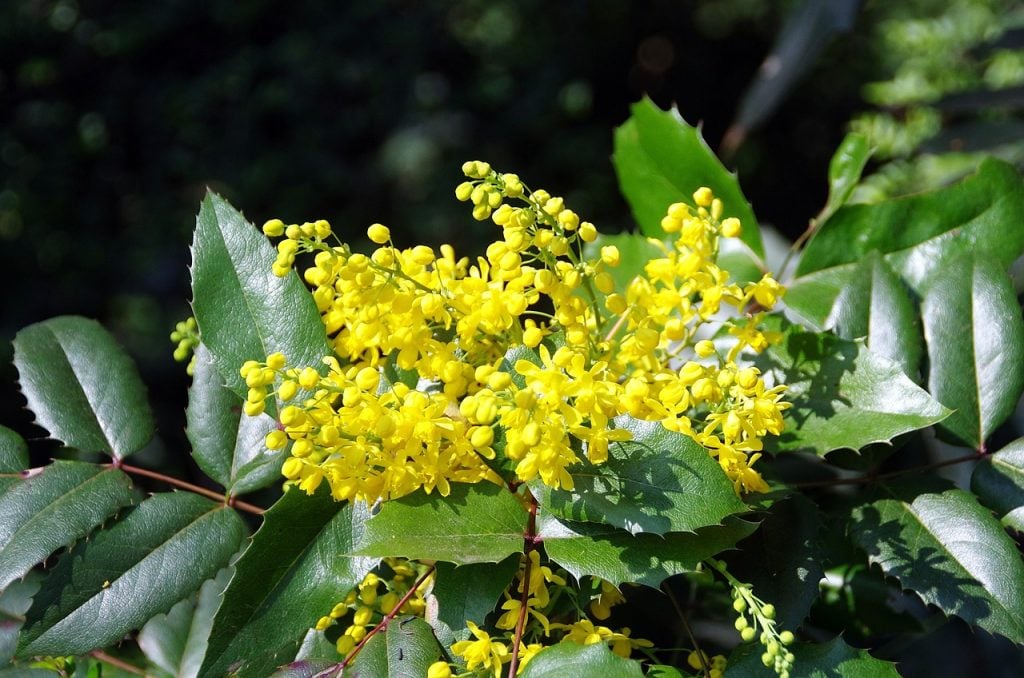
- Binomial Name: Mahonia aquifolium
- Type of Plant: Evergreen shrub
- Sunlight Requirement: Can thrive in full to partial shade
- Hardiness Zones: 7
- Height: 7 inch
Mahonia aquifolium, also known as Oregon grape or holly-leaved barberry, blooms in the spring as bright yellow flowers in clusters.
The bright, mildly fragrant blooms pop up slightly above the leaves from November to March. Summertime sees the plant yield black to blue-coloured berries. They attract bees and other pollinating insects. Mahonia plants flourish in soil that is both moist and well-drained.
The planting season of Mahonia aquifolium can be either in the spring or the autumn. They are used as privacy hedgerows.
18. Primrose
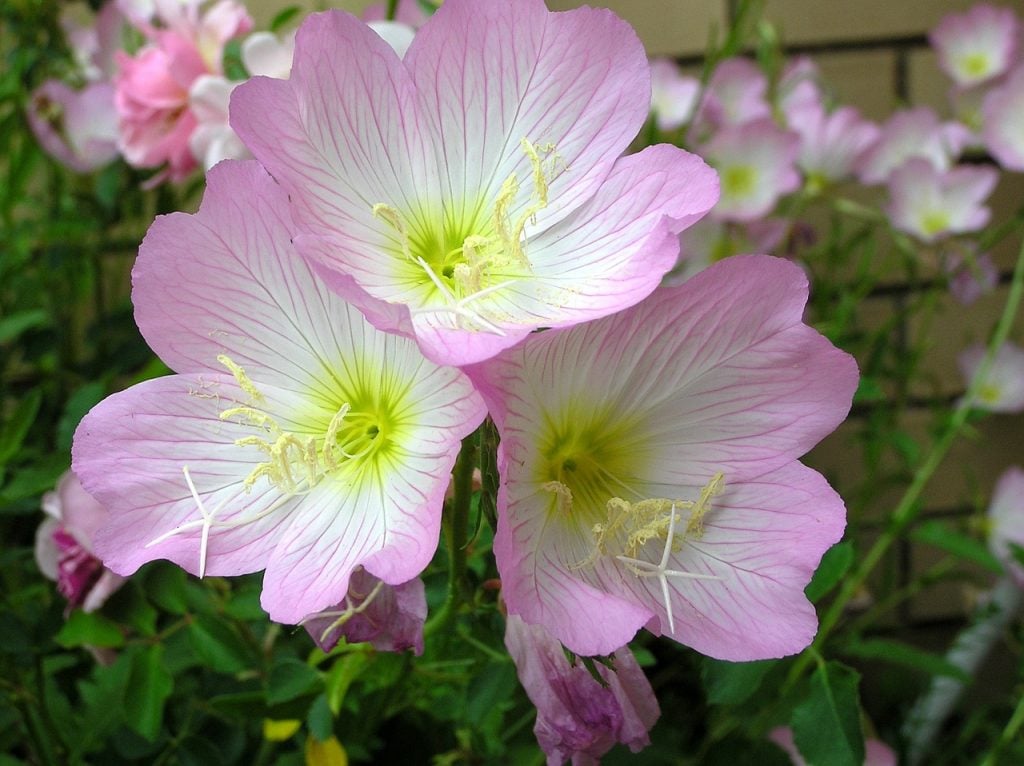
- Binomial Name:Oenothera biennis
- Type of Plant: Evergreen herbaceous
- Sunlight Requirement: Partial shade
- Hardiness Zone: 4-8
- Height: 6-18 inches
Primrose yields flamboyant, aromatic blossoms that range in colour from pale yellow to whipped cream. It blossoms in April and has bean-shaped, creased leaves near its root.
Cool summers boost its growth. Wide woodland-loving varieties need shade against the southeast’s intense midday sun—plant in partially shaded, humus-rich, liquid-retentive soils. Primrose comes in a wide variety of hues, forms, and measurements. They add colours and are amazing decorations for garden beds, boundaries, or patios.
19. Siberian Bugloss
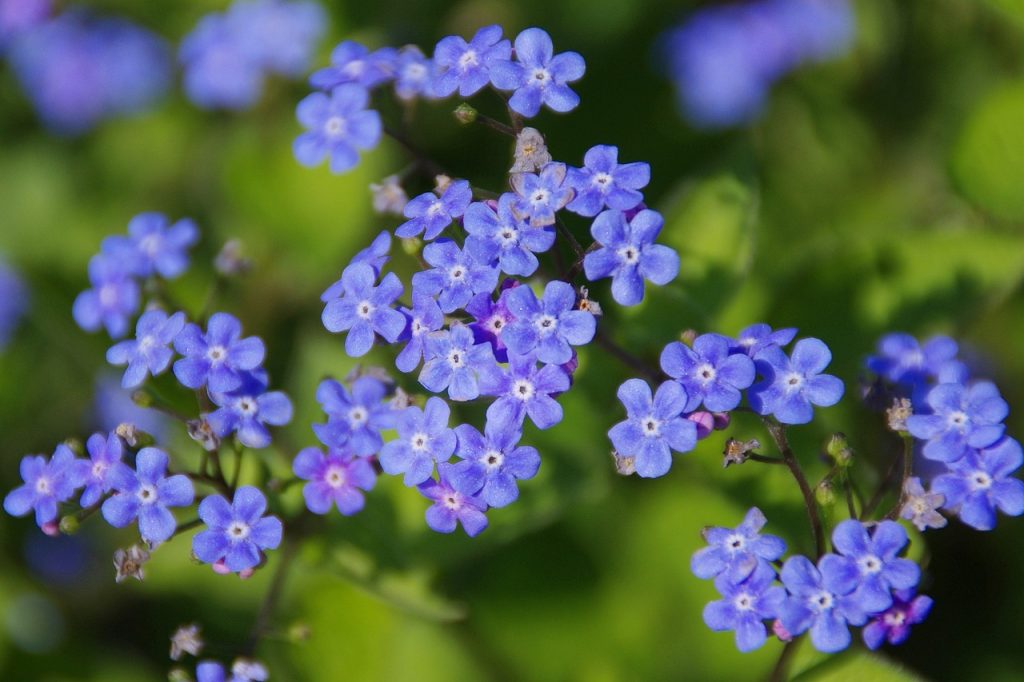
- Binomial Name: Brunnera macrophylla
- Type of Plant: Clump-forming shrub
- Sunlight Requirement: Full or part shade
- Hardiness Zone: 3-8
- Height: 1-2 inches
Siberian bugloss is a perennial that blooms in a bunch. Its rhizomatous roots allow it to propagate. Springtime sees stems covered in blue blooms with a white core.
The pick of flowering season lasts approximately four weeks. Siberian bugloss flourishes where the summers are cool. It requires rich soil, yet it doesn’t need additional feeding to grow in poor or dry soil.
Despite taking some time to grow in, it makes a lovely ground cover and appears stunning, lining a walkway or bordering. Ideal for woodland and shade gardens.
20. Snowdrops
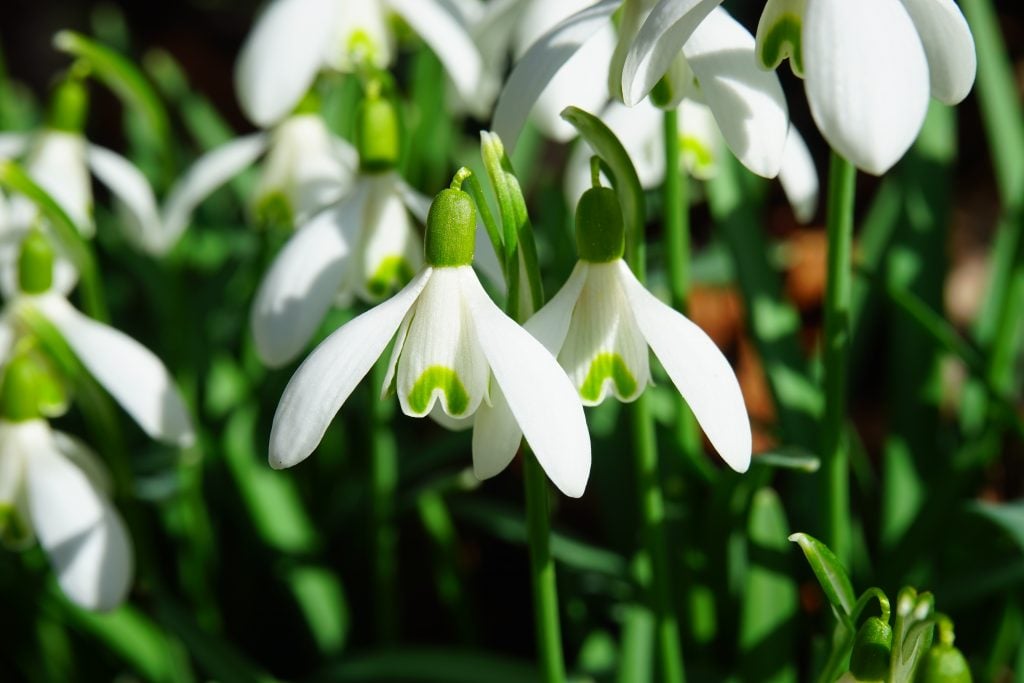
- Binomial Name:Galanthus
- Type of Plant: Perennial herb
- Sunlight Requirement: Shade, part-shade
- Hardiness Zone: 3-7
- Height: 6 inch
The snowdrops are clump-forming bulbous plants. Its silvery-green leaves appear silky and slender. The white blossoms contain six petals with green specks. Typically, they bloom from January through April.
The snowdrops thrive in a dappled shade. They exhibit super growth if the soil is improved with foliage mould or garden waste before planting to prevent summer dryness. To create eye-catching plant arrangements, plant snowdrops at the base of a large tree or a deciduous plant, or pair them up with other kinds of plants.
- Hardcover Book
- Cox, Freda (Author)
- English (Publication Language)
21. Wild Gingers
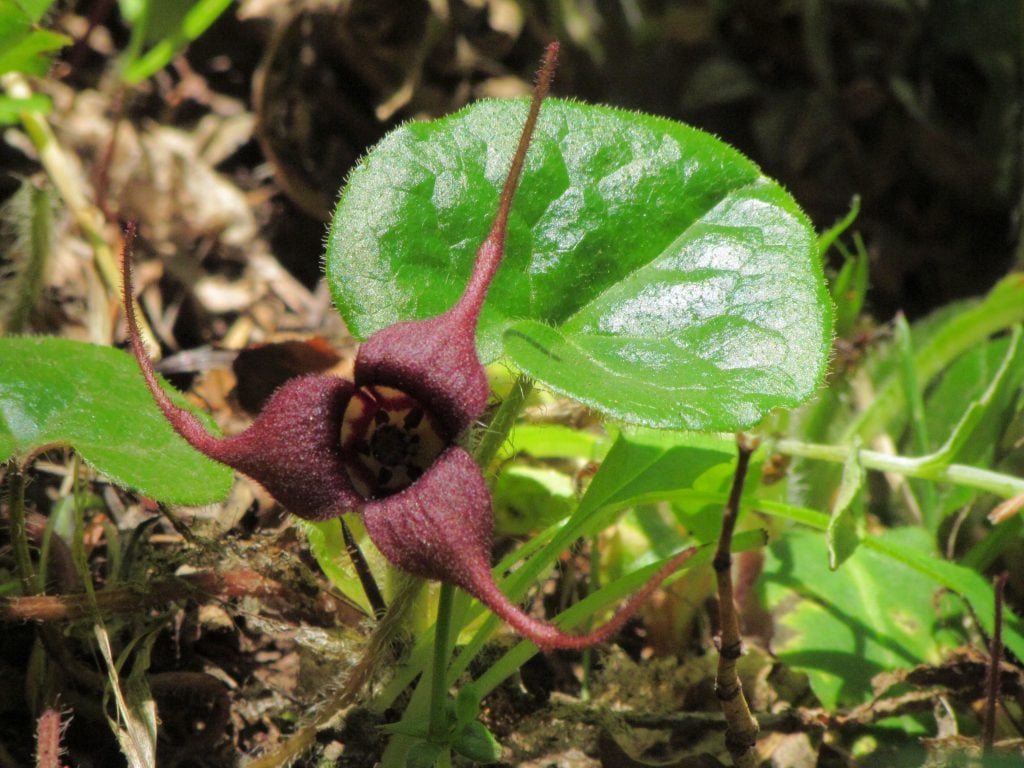
- Binomial Name:Asarum Europaeum
- Type of Plant: Perennial herbaceous plant
- Physical Location: USA, Southeastern Canada, Central & Southern Europe
- Sunlight Requirement: Thrive in full or partial shade
- Hardiness Zone: 4-8
- Height: 6-10 in
Wild ginger only needs a good deal of moisture and requires minimal upkeep. These plants do best under complete to partial shade; planting them in direct sunlight will cause them to burn.
For best growth, wild ginger needs soil that is humus-rich, acidic, and wet but well-drained. Purple flowers appear from April to May.
This ginger is only for landscape designing; it cannot be used as a spice.
22. Wild Columbine
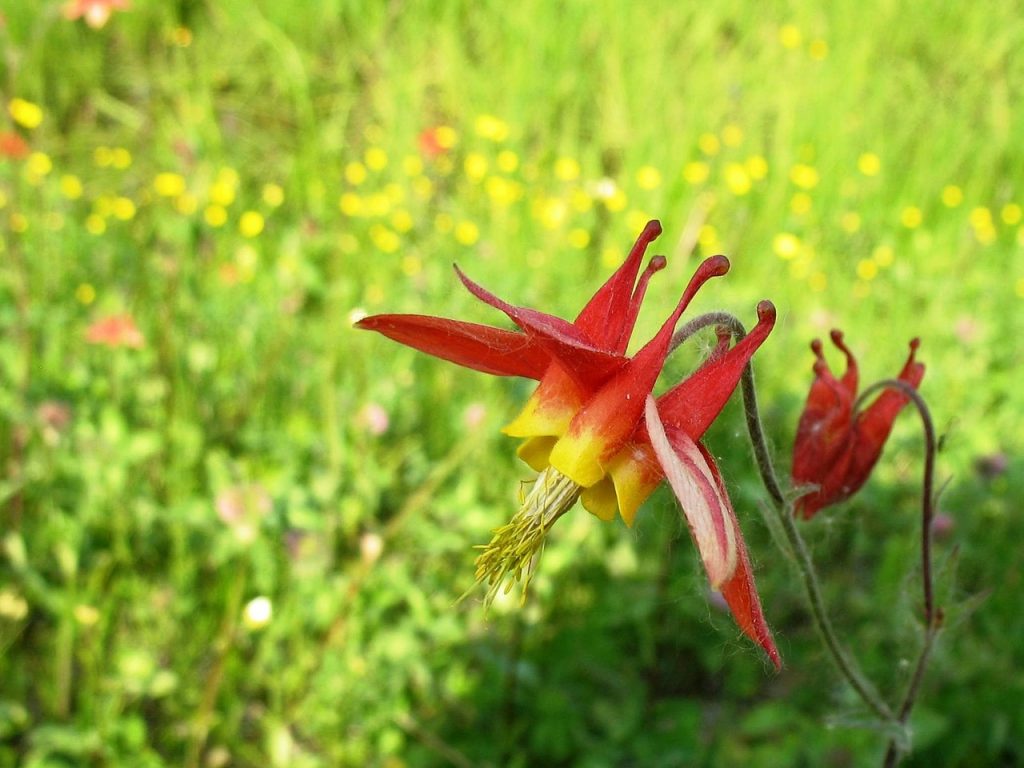
- Binomial Name: Aquilegia canadensis
- Type of Plant: Perennial herb
- Sunlight Requirement: Light to medium shade
- Hardiness Zone: 3-9
- Height: 1-3 feet
Wild columbine, or red columbine, produces down-facing pendulous red or pink blossoms with yellow hearts. Red columbine blooms at May end and continues through July.
The flowers are perched atop thin stems that emerge from a foliage-veil resembling ferns. This drought-resistant plant has split compound leaflets that range in colour from green to blue-green. When planting, pick a shaded spot with well-drained but not overly fertile soil. Excessive watering and poor drainage may reduce the wild columbine’s lifespan.
Hummingbirds and bumblebees flock to the wild columbine flowers, a suitable plant for any shaded landscape.
- Price for 30 seeds
- Four-colour-card with color photo
- Seeds can be started indoors any time throughout the year.
23. Wood Violets
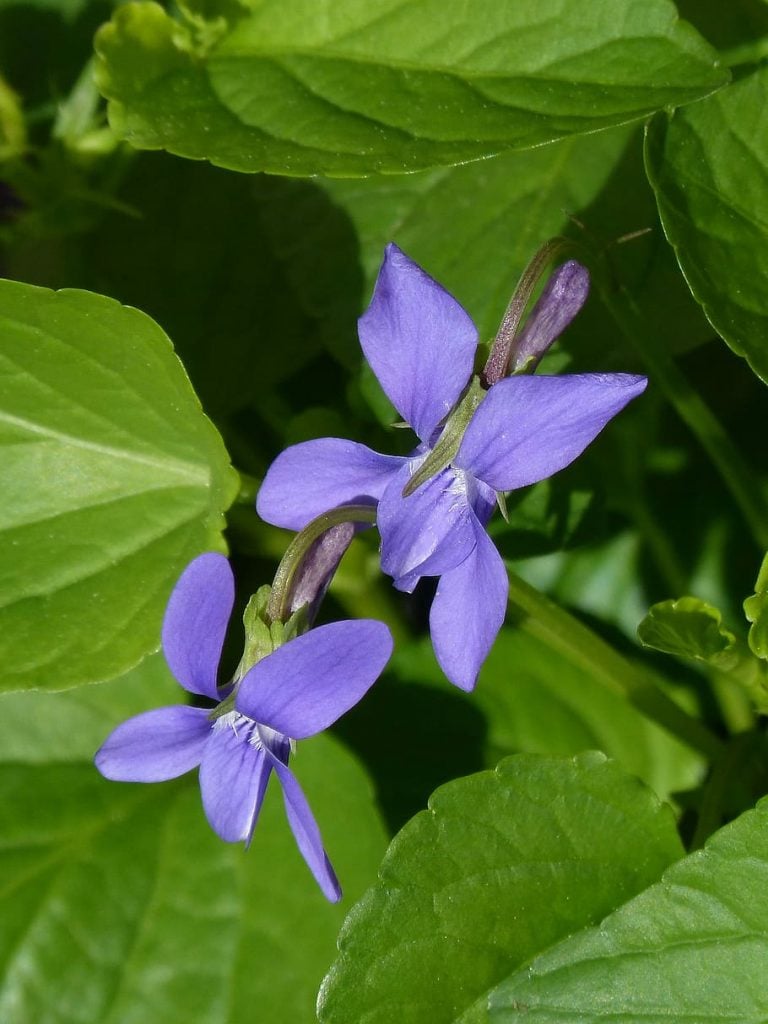
- Binomial Name:Viola sororia
- Type of Plant: Herb
- Sunlight Requirement: Full sun, Partial sun
- Hardiness Zone: 3-10
- Height: 8 inch
Slow-growing perennial plant wood violet is also referred to as common blue violet. They are a stemless variety that features big blue-violet and white flowers as well as shiny, heart-like leaves.
The blooming season starts in the middle of spring and occasionally continues to bloom sporadically into late summer. The wood violet prefers profound, loamy soil and is adverse to hot, dry weather.
When violets are young, they need frequent watering, but as they get older, they become drought-tolerant and need barely any additional watering. It’s a fantastic option for ground cover and shady woodland gardens.
24. Winter Aconites
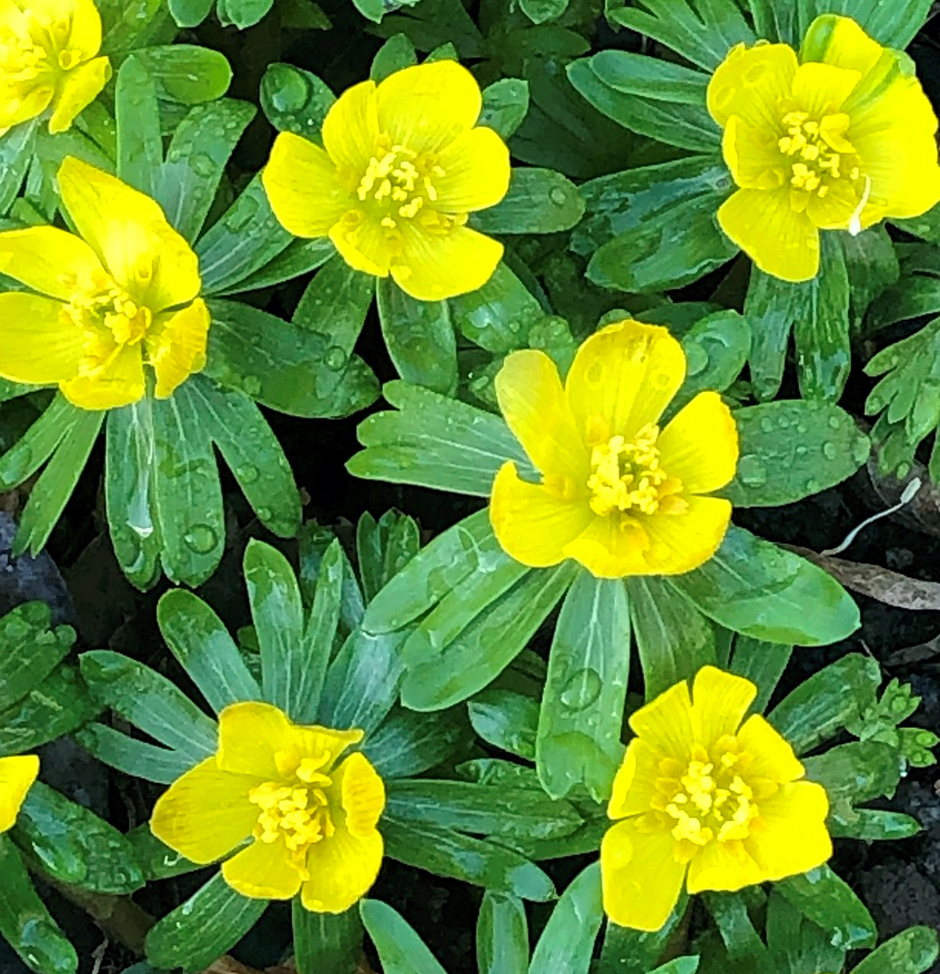
- Binomial Name: Eranthis hyemalis
- Type of Plant: Tuberous plant
- Sunlight Requirement: Partial sun, damp shade
- Hardiness Zone: 4-7
- Height: 3-6 inches
Winter aconite is an easy-to-care plant. The plant yields clumped blooms in late January and early February.
It blooms with plenty of sparkling yellow flowers. Brilliantly coloured green bracts encircle the dimpled blooms. It flourishes in well-drained soil, full of humus with an alkaline pH. They thrive in a slightly humid environment. Following the flower’s fading, leaves with a deep green hue emerge.
Conclusion
The blog presents a bouquet of plant varieties. I hope now you are aware of flowers that can flourish in full or partial shade. As a garden enthusiast, you now have many options to choose from.
This blog described the specific needs, blooming time, soil, water, and sunlight requirements of 24 “under-tree” growing plants. You’ve got ideas for enhancing the beauty of your shaded spot with these plants. My personal choices are angel wing begonia, primrose, and wild columbine.
What are your preferences? We are eager to know. Share with us in the comment box.

